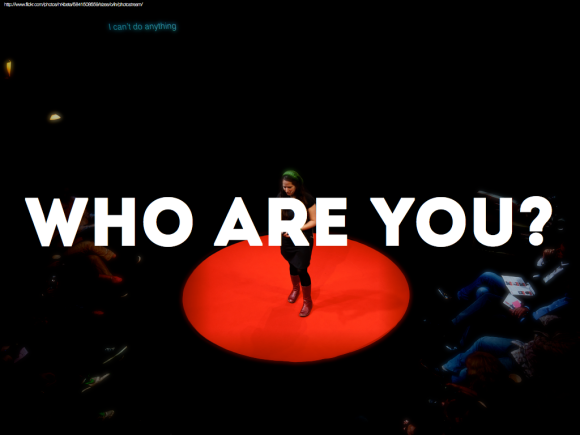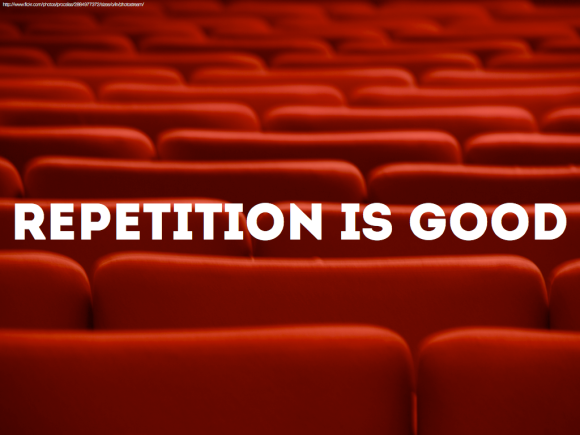It always warms my heart when a former superstudent shares a link to an awesome public speaking, presenting, or design article (for instance, my favorite new typeface, Intro, comes by way of superstudent Alexandria Pham). Today’s “Tweak Your Speech” share comes from Bernardo Simoes. Jeff Haden, Business Insider, INC. contributor, and author of over 30 non-fiction books brings us his “9 Simple Things Great Speakers Always Do.” In this article, Haden shares the nine things great speakers do consistently. He draws from the expertise of entrepreneur Boris Veldhuijzen van Zanten in developing his nine tips. Three that are particularly relevant to the PCP reboot and to the course I teach in general are “reinforce who you are,” “time it perfectly,” and feel free to repeat.
Reinforce Who You Are

One of the best parts of a TED talk is when the speaker shares a bit of his or her story. Learning more about a speaker can help build connection with an audience.
While Nancy Duarte warns Resonate readers against starting a presentation with too much “me-ness,” (Source) she also reinforces that the audience does need to know something about you–enough to help you establish your credibility, shared values, and common ground. van Zanten reinforces this in the article when he states that you as a speaker shouldn’t “overload everyone with information, but in one or two sentences explain how your background matters and makes you the perfect person to share what you’re about to say” (Source). Focusing on establishing credibility from the beginning of a presentation is key to establishing rapport and connection with an audience.
Time it Perfectly

Your audience can only retain so much information; even if you are engaging, keep it shorter than the time given to you.
Every public speaking and presentation teacher focuses on and values different parts of the presentation stool (content, visual story, delivery). While most people would assume that my main focus is visual story, in reality I value content development and organization most. Students are often surprised when I deduct points for both going over time and organization when they exceed their time limits. In reality, time is an indicator of more than just a failure of execution. To me, going over time in a presentation is an indication that you don’t care enough about your message or your audience to stick to your pre-set time limits. It also says to me more focus needs to be placed on organization and rehearsal. As van Zanten says, “[y]our primary goal is to entertain, inform, and make your audience’s investment in time worthwhile. Your goal is not to use up every available minute” (Source).
Feel Free to Repeat
Another common source of anxiety for students and presenters is the fear that they are repeating themselves and how audiences perceive repetition. But, there’s a difference between repeating something because you have no idea what to say next or because you are lost and repetition for emphasis and for a purpose. As Andrew Dlugan explains in his analysis of Martin Luther King Jr.’s “I have a dream,” repetition can be a great way to build momentum and reinforce important ideas. Would we remember that speech as readily without the repetition of that key phrase? Maybe not. van Zanten provides another use of repetition in the article. Repetition helps you cut through that internal dialogue your audience is having while you present: “In reality, people hear about 30 percent of what you say, and of that they’re constantly translating it to fit their own perspectives or agendas” (Source).
Read the rest of the article and learn the other 6 things great speakers do here.

